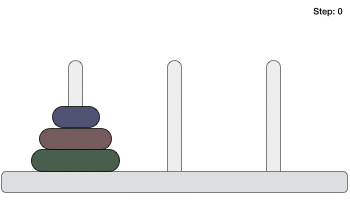Spoiler: Proof of 3
Lemma: For any two disjoint nonempty sets of vassals, the total number of ingots on the scale from the first set cannot equal the total number of ingots on the scale from the second set. If this were the case, it would be impossible to distinguish between (first set is guilty with all 9s and second set is innocent) and (second set is guilty with all 9s and first set is innocent).
The scale can return anything from 9n to 11n, thus there are 2n+1 possible answers. There are 3^5=243 possibilities, thus we need at least 121 ingots if we are to detect all possibilities.
"But wait!" says the King, "I don't need you to distinguish between all possibilities, only guilt and innocence. I don't care if you know that Vassal 1 gave me 9kg ingots or 11, I only care that you know it's fake".
The King is correct, but unfortunately it's impossible to map equivalent strings to the same weight if we are to preserve the property that nonequivalent strings map to different weights. Proof:
Suppose we have numbers of ingots on the scale which map two equivalent strings to the same weight. That is, you can replace some vassals who gave 9 with 11 and some vassals who gave 11 with 9, and the total weight will be the same. (You do not replace any 10s, and you do not replace anything with 10). Then, the total ingots provided by the vassals who gave 9 which got swapped to 11 is the same as the total ingots provided by the vassals who gave 11 which got swapped to 9. This is illegal, as per the lemma, unless both sets are empty. (If one's empty the other has to be too, since everyone needs an ingot on there to distinguish between everyone real and everyone but them real)
Thus, the type of fake must be distinguished, thus all possibilities need to be accounted for, thus at least 121 ingots are needed.
Also, since I don't think I ever actually said: To find guilt just subtract 9*121 from the total returned, convert to base 3, anyone who has a 1 in their corresponding digits place is legit, anyone with a 0 or a 2 is fake.
The scale can return anything from 9n to 11n, thus there are 2n+1 possible answers. There are 3^5=243 possibilities, thus we need at least 121 ingots if we are to detect all possibilities.
"But wait!" says the King, "I don't need you to distinguish between all possibilities, only guilt and innocence. I don't care if you know that Vassal 1 gave me 9kg ingots or 11, I only care that you know it's fake".
The King is correct, but unfortunately it's impossible to map equivalent strings to the same weight if we are to preserve the property that nonequivalent strings map to different weights. Proof:
Suppose we have numbers of ingots on the scale which map two equivalent strings to the same weight. That is, you can replace some vassals who gave 9 with 11 and some vassals who gave 11 with 9, and the total weight will be the same. (You do not replace any 10s, and you do not replace anything with 10). Then, the total ingots provided by the vassals who gave 9 which got swapped to 11 is the same as the total ingots provided by the vassals who gave 11 which got swapped to 9. This is illegal, as per the lemma, unless both sets are empty. (If one's empty the other has to be too, since everyone needs an ingot on there to distinguish between everyone real and everyone but them real)
Thus, the type of fake must be distinguished, thus all possibilities need to be accounted for, thus at least 121 ingots are needed.
Also, since I don't think I ever actually said: To find guilt just subtract 9*121 from the total returned, convert to base 3, anyone who has a 1 in their corresponding digits place is legit, anyone with a 0 or a 2 is fake.
Spoiler: Trick I wanted to use but would not have returned enough information even if it would beat 3^n
If there were more vassals, I could in binary add an unbounded constant number of bits, or add a logarithmic number of bits, or add bits and have the last added bit be not a bit but a a value. What I wanted to do was add 32 ingots from every vassal, thereby telling the sum of the total offness, I thought that from there I might have been able to do something, but I couldn't because the proof generalizes to any number of vassals. Also for a while I considered adding a bit to every pair of bits, yielding which I think might lose to trinary with 5 vassals but not more. None of these would have worked, the proof generalizes to any positive integer number of vassals.
